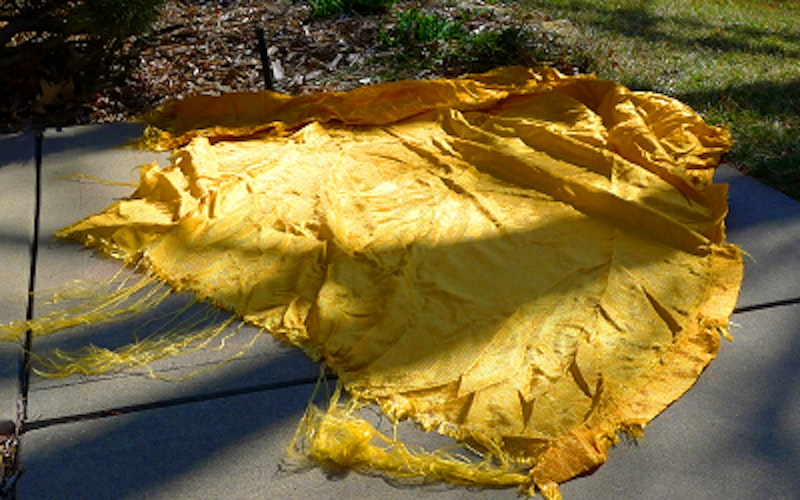
Culture At Large
Unwrapping the art of Christo
The artist known as Christo is in the news again, with an expensive proposal to “wrap” almost six miles of the Arkansas River in Colorado. The project is seeking final environmental approvals, but seems likely to go ahead, over the objections of some local environmental groups.
Reactions to Christo’s projects tend to range from “What?” to “How absurd!” I tend to be highly skeptical of “installations,” the broad category of work into which Christo's art falls, because they are often mistaken for trash and swept up by museum custodial staff (true story). But having experienced Christo’s work firsthand, I want to encourage you not to rush to judgment. Christo’s installations definitely qualify as art and may even change the way you see the world.
Christo has been famous for a long time for (along with his late wife and partner Jeanne-Claude) wrapping various landmarks from Berlin’s Reichstag to the paths of Central Park in New York. “Man on the street” reactions to his work tend to regard it as silly, pointless or just another case of art-world flimflammery being foisted on an unsuspecting public. Certainly many Christians, especially those who think of Thomas Kinkade as a fine artist, would be prone to such snap judgments.
But before you go there, let me encourage you to experience a Christo project for yourself. This is easier said than done, because his installations are temporary. Even thorough documentation of them can never capture the essence of the project, which is experiential more than it is visual.
Let me explain. In 1978, Christo and Jeanne-Claude were engaged to do a project called “Wrapped Walk Ways” in a Kansas City park less than two miles from my parents’ house. I was a frequent user of Loose Park for picnics, tennis, jogging and summer theatricals, and knew it like my own backyard. Or thought I did.
When I learned about the Christo project, my artistic BS detector went into hyperdrive. I thought, like many people did, that this was just an expensive, pretentious boondoggle by a jet-setting artist with a big name and no talent.
Then I saw the work. Every path in Loose Park was covered with a bright, saffron-colored nylon fabric (I still have a scrap secured for me by a friend) that transformed the park and transformed my perception of what public space could be. Yes, the “Yellow Brick Road” analogies were made, but for two magical weeks in October, Loose Park became another world, a place where everyone paid attention to the environment around them, where our sensitivity was heightened by seeing something familiar in a completely unfamiliar way. In some respects, this experience resembled (but is not equal to) redemption itself, when a person, indwelt by the Holy Spirit, is given new eyes to see the world around them.
Loose Park became another world, a place where everyone paid attention to the environment around them, where our sensitivity was heightened by seeing something familiar in a completely unfamiliar way.
That is Christo’s genius in a nutshell: he allows us to see parts of our world in a way we have never seen them before. The experience is transformative, redemptive. It is exactly what art is supposed to do: enlarge and alter our perception of God’s good world.
That doesn’t mean that Christo’s projects are without controversy. Objectors in Colorado are concerned about the impacts of crowds, about the shading of the river, about the potential effect on local fauna. To be honest, I think they’re afraid, though perhaps not certain of what.
But from an environmentalist’s point of view, Christo’s installations really are low impact. They come, they install, they de-install and there is no trace that they were ever there except for a million photographs and the indelible memories of seeing something familiar as if for the very first time.
What Do You Think?
- Have you ever experienced a Christo project?
- Would you welcome one where you live?
- Is the purpose of art to "enlarge and alter our perception of God's good world?"
Topics: Culture At Large, Arts & Leisure, Art